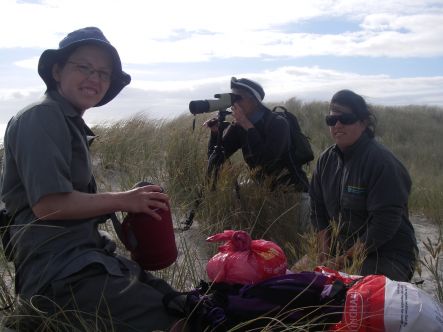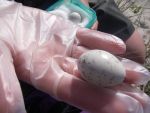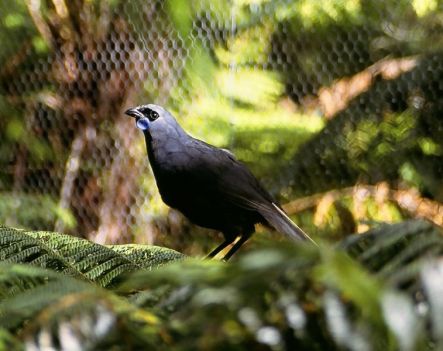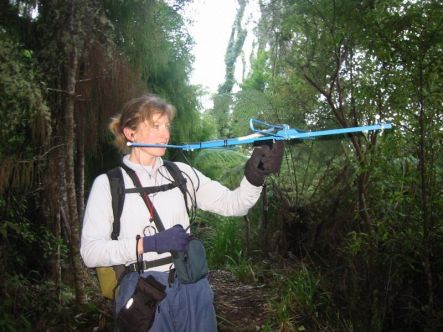Our Changing World for Thursday 18 December 2008
Fairy terns
 Fairy tern warden Anja Meduna, left, volunteer Claire Burt and Department of Conservation ranger Abby Meagher, right, look out for nests along the beach at Waipu Cove, one of four breeding areas for New Zealand fairy terns.
Fairy tern warden Anja Meduna, left, volunteer Claire Burt and Department of Conservation ranger Abby Meagher, right, look out for nests along the beach at Waipu Cove, one of four breeding areas for New Zealand fairy terns.
 With a population of only 35-40 birds, the New Zealand fairy tern, or tara-iti, is our rarest breeding bird. But it is probably also the least known, despite the fact that it breeds on some of Northland's most popular beaches. The main threats to the breeding success of New Zealand fairy terns include habitat depletion through coastal development, predation and high tides and strong winds. If a nest is at risk of being washed away by storm, conservation staff will take the terns' eggs to an incubator at the Auckland Zoo and replace them with wax-filled dummy eggs (pictured on left). Alison Ballance meets Department of Conservation staff and volunteers looking after the birds at Waipu Cove. Find out more about New Zealand fairy terns and DOC's conservation efforts.
With a population of only 35-40 birds, the New Zealand fairy tern, or tara-iti, is our rarest breeding bird. But it is probably also the least known, despite the fact that it breeds on some of Northland's most popular beaches. The main threats to the breeding success of New Zealand fairy terns include habitat depletion through coastal development, predation and high tides and strong winds. If a nest is at risk of being washed away by storm, conservation staff will take the terns' eggs to an incubator at the Auckland Zoo and replace them with wax-filled dummy eggs (pictured on left). Alison Ballance meets Department of Conservation staff and volunteers looking after the birds at Waipu Cove. Find out more about New Zealand fairy terns and DOC's conservation efforts.
Kokako song dialect

Kokako are one of the world's most beautiful songsters. They belong to the ancient endemic family of wattlebirds, together with North Island and South Island saddlebacks and the extinct huia. The kokako is the only member of its family still surviving on the mainland.

Laura Molles, of Lincoln University, tracking kokako.
Kokako on Tiritiri Matangi Island
 In the fourth episode of the Tiritiri Matangi series, Alison Ballance joins volunteer Tertia Thurley (pictured on right) on a kokako nest hunt and catches up with Morag Fordham to find out more about the history of these birds. Then, Veronika Meduna meets a team of biologists at the universities of Waikato and Lincoln to find out about the kokako's large repertoire of dialects and what role they may play for the birds.
In the fourth episode of the Tiritiri Matangi series, Alison Ballance joins volunteer Tertia Thurley (pictured on right) on a kokako nest hunt and catches up with Morag Fordham to find out more about the history of these birds. Then, Veronika Meduna meets a team of biologists at the universities of Waikato and Lincoln to find out about the kokako's large repertoire of dialects and what role they may play for the birds.
Origins of house mice
How come house mice on the Chatham Islands are most closely related to an Asian strain? Mammal expert Carolyn King and evolutionary biologist Chrissen Gemmill, at the University of Waikato, have traced the origins of mice in New Zealand and found that ship wrecks and trading boats may have brought the rodents to New Zealand some time before the first settlers arrived.